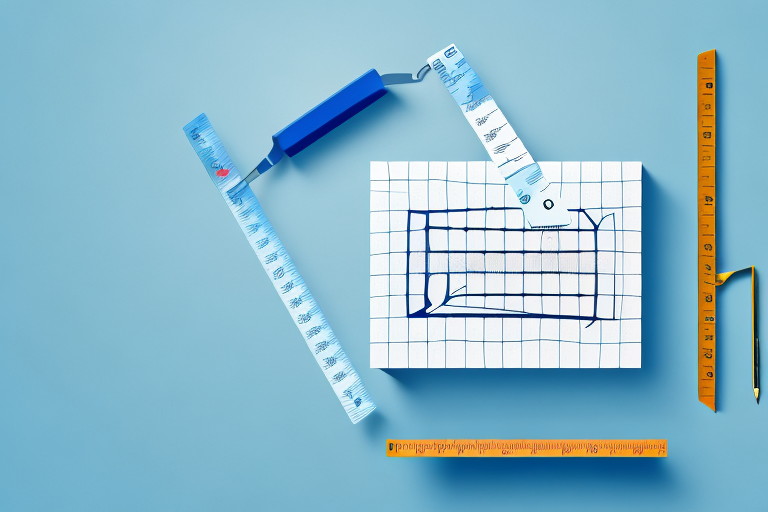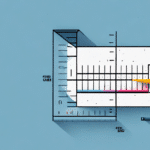Measuring Large Boxes Accurately
Accurate measurement of large boxes is essential for ensuring that your items are securely packed and that shipping costs are correctly calculated. Here are some tips and best practices to help you measure your boxes with precision.
Tips and Tricks for Measuring
- Flatten the Box: Start by flattening the box to easily measure its dimensions.
- Use a Tape Measure: Measure the length, width, and height, ensuring you capture the longest and shortest points of each side.
- Trim Excess Material: Use a utility knife or scissors to remove any extra cardboard that might interfere with accurate measurements.
Measuring Odd-Shaped Boxes
Odd-shaped boxes can be tricky to measure. Break them down into simpler shapes like rectangles or cubes, measure each component separately, and then sum the measurements to get the total dimensions.
Common Mistakes to Avoid
- Measuring the box while it’s open, which can lead to inaccurate dimensions.
- Failing to measure each side's longest and shortest points.
- Not accounting for the thickness of the material, especially in corrugated boxes.
Choosing the Right Size Box for Your Needs
Selecting the appropriate box size is crucial for both protection of your items and cost-efficiency in shipping and storage.
Inventorying Your Items
Start by making a detailed list of the items you need to pack, including their sizes, shapes, and weights. This will help you determine the best box size to accommodate everything securely.
Weight Considerations
Boxes that are too heavy can be difficult to handle and may incur higher shipping costs. Aim to keep each box under 50 pounds when possible. For heavier items, consider using multiple smaller boxes instead of one large one.
Material Types
The material of the box affects its durability and suitability for different items. Corrugated cardboard is ideal for most shipping needs, but plastic or metal containers may be better for items sensitive to moisture or requiring extra protection.
Custom-Made Boxes
For items with specific size or protection requirements, custom-made boxes offer precise dimensions tailored to your needs. Additionally, custom boxes can be branded with your company logo, serving as effective marketing tools.
Types of Large Boxes and Their Dimensions
Understanding the different types of large boxes and their standard dimensions can help you choose the best option for your shipping or storage needs.
Common Box Types
- Regular Slotted Cartons: Ideal for shipping or storing items that are uniform in size and shape.
- Full-Overlap Cartons: Provide extra protection for fragile or valuable items.
- Telescoping Cartons: Adjustable in size, perfect for items of varying dimensions.
- Corrugated Trays: Suitable for display cases or organizing smaller items.
Understanding Measurement Units
Box dimensions are typically measured in inches, centimeters, or millimeters. It's important to use the unit of measurement that aligns with your shipping or storage requirements to ensure accurate volume calculations and cost assessments.
Calculating Box Volume and Shipping Costs
Properly calculating the volume of your boxes is essential for determining shipping costs and optimizing space utilization.
How to Calculate Volume
Use the formula: Volume = Length × Width × Height. Accurate volume calculations help in understanding the space your items will occupy and in estimating shipping expenses.
Impact on Shipping Costs
Most courier services use dimensional weight pricing, which considers both the size and weight of the package. Optimizing box dimensions can significantly reduce shipping costs. For detailed information on dimensional weight, refer to the FedEx Dimensional Weight Guide.
Packing and Storing Large Boxes Efficiently
Efficient packing and proper storage of large boxes ensure the safety of your items and optimize space usage.
Packing Techniques
- Layering: Place heavier items at the bottom and lighter ones on top.
- Filling Gaps: Use packing materials like bubble wrap or packing peanuts to prevent items from shifting.
- Secure Sealing: Use sturdy tape to seal the box securely, ensuring it remains closed during transit.
Best Practices for Storage
Store boxes in a clean, dry area away from heat sources and direct sunlight. When stacking, place heavier boxes at the bottom and avoid stacking too high to prevent accidents. For more storage tips, consult resources from the Occupational Safety and Health Administration (OSHA).
Advanced Tools and Techniques
Leveraging advanced tools and techniques can enhance the accuracy and efficiency of measuring and handling large boxes.
Automated Dimensioning Systems
Automated systems use laser sensors and cameras to measure boxes quickly and accurately, reducing human error and increasing productivity. These systems are particularly beneficial in large warehouses and distribution centers.
Modifying Box Dimensions
If standard box sizes do not meet your specific needs, you can modify existing boxes by cutting them to size with a utility knife or adding cardboard inserts to create compartments. Ensure that any modifications maintain the box's structural integrity to protect your items effectively.
The Importance of Accurate Box Dimensions
Accurate box dimensions play a vital role in the efficiency and cost-effectiveness of shipping and storage operations.
Ensuring Secure Fit
Properly sized boxes prevent items from shifting or getting damaged during transit, ensuring they arrive safely at their destination.
Optimizing Shipping Costs
Accurate dimensions allow for precise calculation of shipping costs based on dimensional weight, helping you avoid overpaying for shipping services.
Enhancing Storage Efficiency
Knowing the exact dimensions of your boxes helps in organizing storage spaces more effectively, reducing clutter, and making it easier to locate items when needed.
Conclusion
Understanding and accurately measuring the dimensions of large boxes is essential for successful shipping and storage. By following the tips and best practices outlined in this guide, you can ensure that your items are packed securely, shipping costs are minimized, and storage spaces are optimized. Whether you're handling standard boxes or require custom solutions, precise measurements are key to efficient and effective logistics management.




















